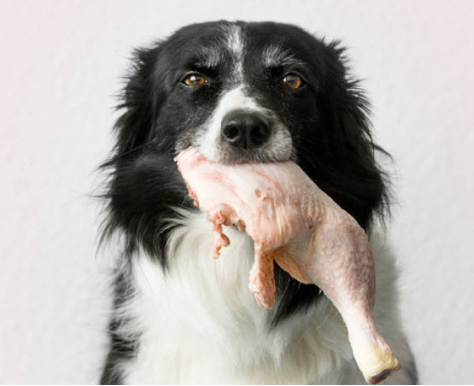
As pet owners, we always strive to provide the best nutrition for our dogs. One question that frequently arises is, “Can dogs eat raw chicken?” This topic has sparked much debate among veterinarians, pet nutritionists, and dog owners alike. In this article, we will explore the benefits, risks, and considerations associated with feeding raw chicken to dogs.
Understanding Raw Diets
Raw diets, also known as BARF (Biologically Appropriate Raw Food) diets, have gained popularity in recent years. Proponents of raw feeding argue that it mimics the natural diet of wild dogs and wolves, providing numerous health benefits. Raw chicken is often included in these diets as a primary source of protein.
Benefits of Feeding Raw Chicken
Nutritional Value
So, can dogs eat raw chicken and benefit nutritionally? Yes, raw chicken is a rich source of protein, essential for muscle development and overall health in dogs. It also contains important nutrients like B vitamins, zinc, and iron, which contribute to a balanced diet.
Health Benefits
Advocates of raw feeding suggest that it can lead to improved coat condition, healthier skin, increased energy levels, and better dental health. Some dog owners report fewer allergies and digestive issues when switching to a raw diet.
Risks of Feeding Raw Chicken
Bacterial Contamination
One of the primary concerns with feeding raw chicken is the risk of bacterial contamination, particularly with pathogens like Salmonella and Campylobacter. These bacteria can cause severe gastrointestinal issues in dogs and pose a risk to human health if transmitted.
Bone Hazards
Another important aspect when considering “Can dogs eat raw chicken?” is the potential hazard posed by raw chicken bones. These bones can cause choking or internal injuries such as perforations in the digestive tract. While some raw feeders advocate for the benefits of raw bones, it is crucial to ensure they are appropriate for the dog’s size and chewing habits.
Guidelines for Feeding Raw Chicken

If you decide to include raw chicken in your dog’s diet, it is important to follow certain guidelines to minimize risks:
Sourcing Quality Chicken
Always source high-quality, human-grade chicken from reputable suppliers. Avoid using chicken that has been sitting in the refrigerator for too long or has an off smell.
Safe Handling Practices
Practice safe handling to reduce the risk of bacterial contamination. Wash your hands, utensils, and surfaces thoroughly after handling raw chicken. Store raw chicken separately from other foods and keep it refrigerated or frozen until ready to use.
Proper Preparation
Cut the chicken into appropriate sizes for your dog, removing any small bones that could pose a choking hazard. Consider grinding the chicken if your dog is not accustomed to chewing bones.
Monitor Your Dog’s Health
Regularly monitor your dog’s health when feeding raw chicken. Look for any signs of digestive upset, changes in stool consistency, or other health issues. Consult your veterinarian if you have any concerns or if your dog has a compromised immune system.
Alternatives to Raw Chicken
If you are hesitant about feeding raw chicken, there are alternatives to consider. Cooked chicken can provide similar nutritional benefits without the risk of bacterial contamination. Additionally, there are commercially prepared raw diets available that follow strict safety standards and are balanced for canine nutrition.
How to maintain healthy live dog https://kucch.co/2024/06/07/dogs-health/
